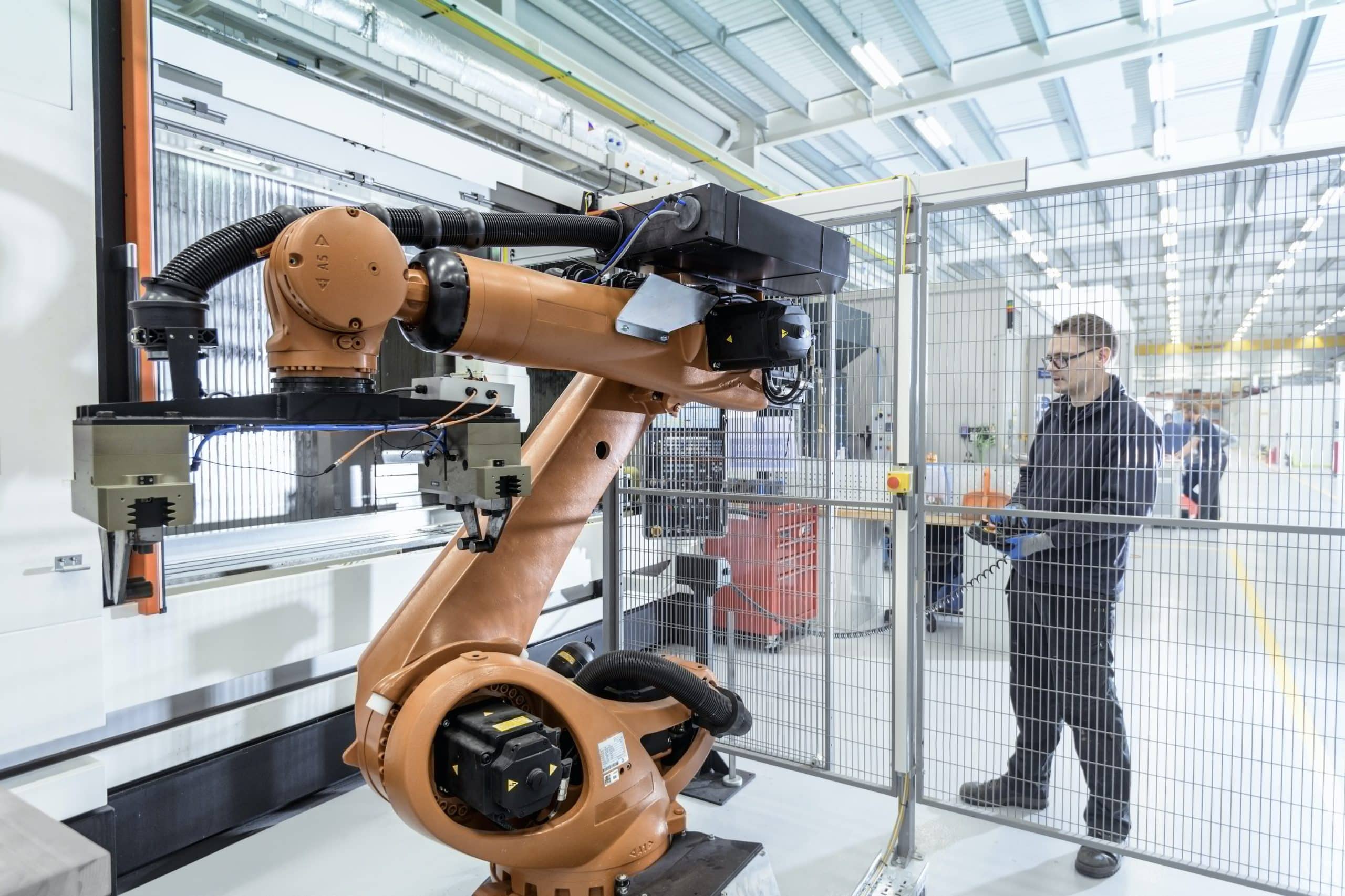What are the implications of advanced robotics and automation technologies on real estate construction efficiency?

From the earliest times, humans have sought ways to improve and streamline the construction process. This quest for efficiency has led to significant advancements in technology within the construction industry. A recent report by McKinsey & Company has suggested that the construction industry is ripe for disruption by automation, data utilization, and robotics. Advancements in these technologies have the potential to revolutionize the way we build and manage our real estate projects.
The introduction of automation and robotics into the construction industry presents numerous opportunities and challenges. While there’s no denying that these technologies can provide groundbreaking improvements in efficiency, they also bring about new considerations in project management, manufacturing, and human involvement.
A lire aussi : How can real estate investments be tailored to capitalize on trends in remote and flexible workspaces?
The Role of Automation and Robotics in Construction
Automation, in its simplest form, is the use of technology to perform tasks with minimal human intervention. In the construction industry, this can range from automated machinery for simple tasks such as bricklaying, to more complex processes like 3D printing of entire buildings.
Robots, on the other hand, are a specific type of automation. They can be programmed to perform a variety of tasks, often replicating human actions. In the construction industry, this could involve anything from autonomous vehicles transporting materials around a site, to drones conducting site surveys.
A lire également : What are the challenges and solutions for maintaining indoor air quality in commercial real estate?
Integrating these technologies into the construction process has the potential to vastly increase efficiency. For example, using robots for repetitive tasks can significantly reduce the time taken to complete a project, as they can work round-the-clock without breaks. Automating processes also minimizes human error and increases precision, ensuring a higher quality finish.
The Impact of Real-Time Data on Construction Efficiency
The use of real-time data in the construction industry is another significant game changer. As Google Scholar articles suggest, real-time data can be utilized in various ways to enhance construction efficiency.
Real-time data can be gathered from many sources, including drones, IoT devices, and automated machinery. This data can provide invaluable insights into site conditions, progress tracking, and even predict potential problems before they become serious issues.
Project management can greatly benefit from real-time data. With this data, project managers can make more accurate decisions, identify bottlenecks, and improve overall workflow. In an industry where delays and cost overruns are all too common, the utilization of real-time data is key to improving efficiency and profitability.
The Human Element in the Age of Automation
Despite the many benefits of automation and robotics, it’s important to remember the human element. The construction industry is a major employer, and while automation can increase efficiency, it may also lead to job displacement.
However, rather than completely replacing human workers, it’s more likely that these technologies will transform the nature of construction work. For example, while robots may take over more manual and repetitive tasks, there will still be a need for human oversight, creativity, and problem-solving skills.
Furthermore, the use of these technologies can also improve worker safety. Construction is one of the riskiest industries in terms of accidents and fatalities. Automation and robotics can take over dangerous tasks, thereby reducing human exposure to risky situations.
Future Projections for Robotics and Automation in Construction
Looking ahead, the integration of robotics and automation within the construction industry is only set to increase. A study by the World Economic Forum predicts that by 2025, robots will carry out 10% of all construction work.
The real estate sector, with its constant need for efficiency and cost-effectiveness, will undoubtedly be at the forefront of adopting these technologies. The future of construction could see a world where buildings are ‘printed’ rather than built, where drones are as common as cranes, and where virtual reality is used to visualize and plan projects in ways we can’t even imagine today.
Remember, the future of the construction industry will not be human or robot, but rather a partnership between the two. The integration of automation and robotics in construction is not about replacing humans, but about creating an environment where humans and machines work together to achieve a common goal: building more efficiently and safely.
The Intersection of AI, Machine Learning, and Construction
Artificial Intelligence (AI) and Machine Learning (ML) are impacting numerous industries, and construction is no exception. Their application within the industry is broad and transformative, offering exciting avenues for increased efficiency and precision in real estate projects.
AI systems can learn from data, identify patterns, and make decisions with minimal human intervention. In the construction field, AI can be used to optimize schedules, manage resources, and even predict potential project risks. For instance, Google Scholar has documented several studies where AI has been used to predict construction project delays, which can save significant time and costs.
Machine Learning, a subset of AI, involves algorithms that can learn and improve from experience. ML can improve decision-making by analyzing historical data from construction sites and using it to predict future outcomes. For example, machine learning algorithms could analyze weather patterns to predict potential delays due to adverse conditions, enabling proactive planning.
Moreover, AI and ML can significantly enhance Building Modeling. This technology creates digital representations of physical and functional characteristics of buildings. AI can provide data-driven insights into the most efficient design construction, ensuring optimal use of resources.
In short, AI and ML represent the next frontier in construction technology, driving efficiencies and cost savings in project planning, execution, and management.
Emerging Technologies in Construction: Big Data, Cloud Computing and Commercial Real Estate
Emerging technologies like Big Data and Cloud Computing are revolutionizing the way commercial real estate projects are managed and executed. They enable real-time data collection, analysis, and decision-making, significantly improving the efficiency of construction projects.
Big Data refers to the vast amount of data generated every second from various sources at construction sites. This data, after being processed and analyzed, can provide valuable insights into construction project management, helping identify patterns, make predictions, and optimize processes.
Cloud Computing, on the other hand, provides a platform for storing and accessing huge datasets. It allows construction companies to access project data from anywhere, facilitating real-time collaboration and decision-making. In the era of remote work, this capacity is invaluable.
Furthermore, these technologies have significant implications for commercial real estate. They offer the potential to streamline the construction process, reduce costs, and increase the overall quality and efficiency of projects. For instance, real-time data from IoT devices can be stored in the cloud and accessed instantaneously for decision-making, preventing costly delays.
Conclusion: The Future of Construction and Civil Engineering
The integration of advanced robotics, automation technologies, and emerging technologies such as AI, Machine Learning, Big Data, and Cloud Computing is set to drastically reshape the construction industry. As these technologies continue to evolve, construction companies must adapt to stay competitive.
Despite the challenges, the benefits of these advancements are undeniable. They offer the potential for significant improvements in efficiency, cost-effectiveness, and quality in the construction of real estate projects.
However, the human element remains crucial. The goal is not to replace humans but to create a symbiotic relationship where humans and machines work together to achieve better outcomes.
In conclusion, the future of construction is not solely about buildings and structures – it is about partnerships. Partnerships between humans and machines, between traditional practices and innovative technologies, and between the construction and real estate industries. As we look ahead, it is clear that the construction site of the future will be a place where human ingenuity is amplified by technological prowess, leading to greater efficiency, safety, and profitability.
